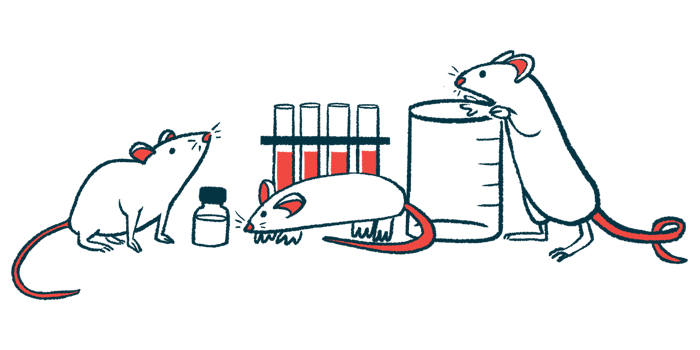Farnesol, Part of Essential Oils, Aids Myelin in CMT1A Mouse Model
Written by |

Farnesol, a component of essential oils of various plants, increased the amount of myelin — a fatty layer that covers and protects nerves — made by lab-grown cells and in a mouse model of Charcot-Marie-Tooth disease type 1 subtype A (CMT1A), a study found.
Researchers also observed that farnesol improved the ability of nerves to send messages (electrical impulses) to muscles, with a better control of the movements required for running evident in treated versus untreated mice.
If the findings hold true for people, they could be the basis of a potential therapy for CMT1A, the researchers noted.
The study, “Farnesol ameliorates demyelinating phenotype in a cellular and animal model of Charcot-Marie-Tooth disease type 1A,” was published in the journal Current Issues in Molecular Biology.
CMT1, also known as demyelinating CMT, is caused by genetic alterations that damage myelin. When myelin is damaged, the nerves it wraps become weakened and stop working or die. Both motor nerves (nerves that control muscle movement) and sensory nerves (those that carry sensory information to the brain) can be affected.
“Currently, there are no treatment options to improve the degeneration of peripheral nerves in CMT patients,” the researchers wrote.
A team in the Republic of Korea wondered whether farnesol could protect against the loss of myelin in an animal model of CMT1A. Farnesol is known to play a role against oxidative stress — an imbalance when antioxidant defenses cannot protect against damage by reactive oxygen molecules — and against inflammation and neurodegeneration.
First, the researchers grew rat-derived Schwann cells, a type of glial cell that makes myelin in peripheral nerves (those outside the brain and spinal cord). A glial cell is any of the cells in the nervous system that support nerve cells and help them work the way they should.
In some of the Schwann cells, the researchers introduced a copy of the PMP22 gene. This gene provides instructions for making a protein of the same name, a component of myelin. In people, one extra copy of PMP22 is enough to cause CMT1A. The remaining Schwann cells were unaltered, serving as controls.
Researchers then watched for changes in the number of cells. They found that cells with an extra copy of PMP22 did not increase in number as much as control cells did. They also found myelin levels were lower in cells with that extra PMP22.
Next, the researchers used mice, called C22, which harbor seven copies of the human PMP22 gene. These mice are commonly used as a model of CMT1A. Half of the mice were fed a chow containing 0.5% of farnesol, and the other half were fed their usual diet to serve as controls. The scientists then watched for changes in the ability of mice to run on a rotating rod (rotarod).
They found that farnesol-treated mice fell off the rotarod a mean 13.5 seconds later than control mice.
A nerve conduction velocity test revealed that electrical impulses moved faster through the nerves of farnesol-treated mice than through those of the untreated disease mice. Moreover, compared with these controls, the motor nerves of farnesol-treated mice were better at stimulating the action of muscles.
“The integrity of the peripheral nerve and Schwann cells were improved by farnesol administration,” the researchers wrote.
To get a more detailed view of the nerves, the scientists looked at the sciatic nerve, a long nerve that runs from the lower back down through the legs. Compared with normal (wild-type) mice, C22 mice had sciatic nerves covered by a much smaller and thinner myelin sheath.
However, the myelin sheath in farnesol-treated C22 mice almost resembled that of wild-type mice. The amount of myelin made by Schwann cells of the sciatic nerve was also higher in farnesol-treated than untreated mice.
“Farnesol administration improved the demyelinating phenotype of a CMT1A animal model through the promotion of myelin protein expression,” the researchers concluded, adding that further studies are needed to explore its therapeutic potential.




